Like The Magnificent One, Yags, Sid the Kid, and Gino in Pittsburgh, Auston Matthews is similarly revered and aptly named by fans of the Toronto Maple Leafs. The moniker AM34 sounds like a fighter jet, and if you’ve ever seen Matthews smoothly skate the puck down the middle of the ice, shift onto the left side, and release his unique and devastating wrist/snapshot, you’ll understand why that nickname works.
It’s also one of many reasons why Pittsburgh Penguins general manager (and former Maple Leafs general manager) Kyle Dubas will be ready if Matthews becomes an unrestricted free agent (UFA) next summer.
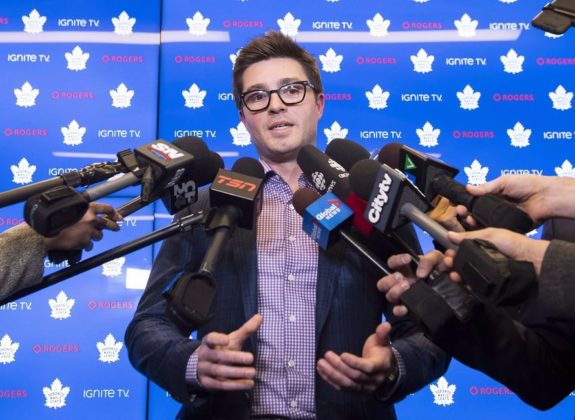
Dubas and Matthews have a long connection and a close relationship (from “With Treliving hire, Leafs’ Brendan Shanahan is gambling that team can reach next level,” The Athletic, June 1, 2023). Matthews and his management team have a strong comfort level in working with Dubas. This would allow Pittsburgh to have a better chance than other teams to sign Matthews…if he’s available, of course.
For the Penguins, Matthews would represent an immediate retool that would be the singular key piece to keeping Pittsburgh competitive for as long as Matthews is willing to sign for. Signing the Maple Leafs star would be easier than relying on another lottery victory and would represent the rare example of an unrestricted free agent who is actually worth the cost. A cost that would be record-setting.
There are so many juicy elements to this concept, where does one begin? Since my focus is on the business end, let’s start there with the salary cap.
In the summer of 2024, according to CapFriendly, the Penguins will have under contract:
- Nine forwards
- Five defensemen
- One goalie
- One bought-out player (dead cap hit)
That’s 15 skaters and one buyout, representing a total cap hit of $70,191,842. In the summer of 2018, everyone was screaming how bad Jack Johnson’s signing was. Who know that six years later we would be viewing it from the prism of how his buyout would potentially affect Pittsburgh’s ability to bid for the services of one of the three best players in the world come 2024. Yet here we are.
The salary cap for the 2024-25 season is projected to be $87,500,000, which means Pittsburgh will have $17,308,158 to sign at least five more players: three forwards, one defenseman, and one goalie.
If Matthews makes it to the UFA market next summer, he will command north of $15 million per season, and I can see the number being as high as $16.5 million, for as many years as he wants. Remember, he signed a five-year deal coming out of his rookie contract that walked him directly to the option of absolute hockey freedom. Matthews could easily sign a three-to-five-year contract that allows him to sign a long-term deal in his late 20s-early 30s for an even higher annual average value (AAV).
Now, I can see some of you doing some quick math and exclaiming “Hey! That doesn’t leave the Penguins enough money to fill out their roster! You’re a fool!” Well now, don’t head to the comments section just yet, because we’re getting there.
But first, here’s a look at why Matthews will command that type of salary and why he is absolutely worth every penny.
The 200-Foot Fighter Jet
In a world where Connor McDavid exists, Matthews easily won the 2022 NHL MVP Award. There.
Wait, you want more? Okay.
While Matthews was setting records with the US National Team Development Program, he was every bit as focused on his defensive game. While playing his draft year in Switzerland as a 17-year-old, he learned the pro game and improved his defensive play under Stanley Cup-winning head coach Marc Crawford. Coming into the NHL under a curmudgeonly grinder like Mike Babcock also helped, as Matthews got to further hone his defensive acumen under a head coach who demanded responsibility across all 200 feet of the ice.
This is where the eye test and analytics align. Watching him play, we can see Matthews deep in his own zone, winning battles along the end boards, lifting sticks to steal pucks, and leading his team out of the D-zone into the offensive zone as a result. This means he has a lot of takeaways, a strong defensive zone exit percentage, and is one of the reasons why his defensive analytics are good across the board.
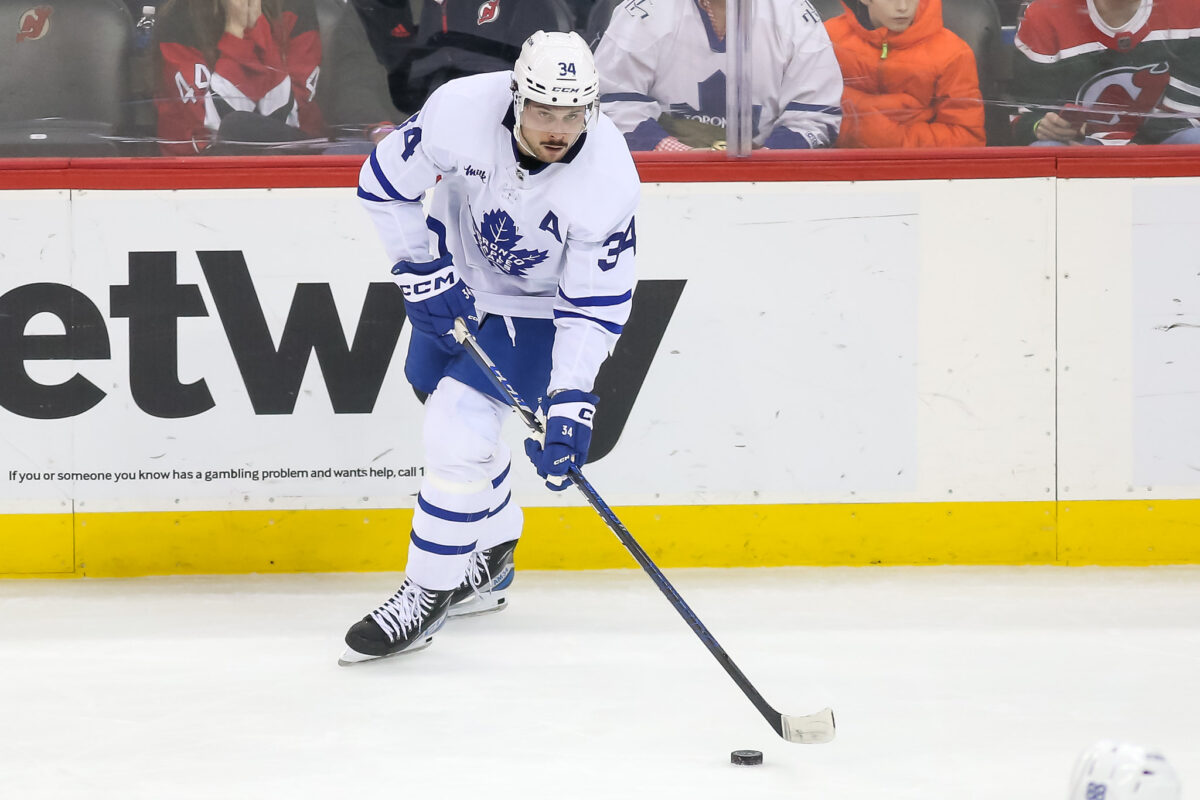
If you been following the Connor Bedard hype, one of the notes you will likely read is how Bedard’s shot and his release are so unique. It is said that no players in the current NHL who can shoot for the way he does in terms of technique. Many have also argued that Bedard and Matthews are neck-and-neck in terms of their potential in their draft season. Before Bedard, Matthews was the one who had a shot unlike anyone else, and frankly, he still does. His version of a toe curl into a wrist shot is a modern take on another left-handed monster’s wrist shot, Mark Messier. And like Messier, when he’s healthy, Matthews can rip it from anywhere and score, even when the goalie knows it’s coming.
Ironically, this is also where the risk with Matthews comes in.
The Hand Injuries
Matthews has suffered a multitude of hand and wrist injuries the past few seasons, including playing much of 2020-21 with a wrist injury, which he then had surgery on during the offseason. He also played through a hand injury for most of last season (from ‘Auston Matthews opens up about the hand injury that’s hampered him,’ The Athletic, March 15, 2023). Playing hurt, these injuries have affected his shot and thus his ability to convert expected goals into actual goals, as his goals per 60 (minutes of ice time) dropped from a career-high of 1.94 each of the past two seasons to a near-career low of 1.36 in 2022-23.
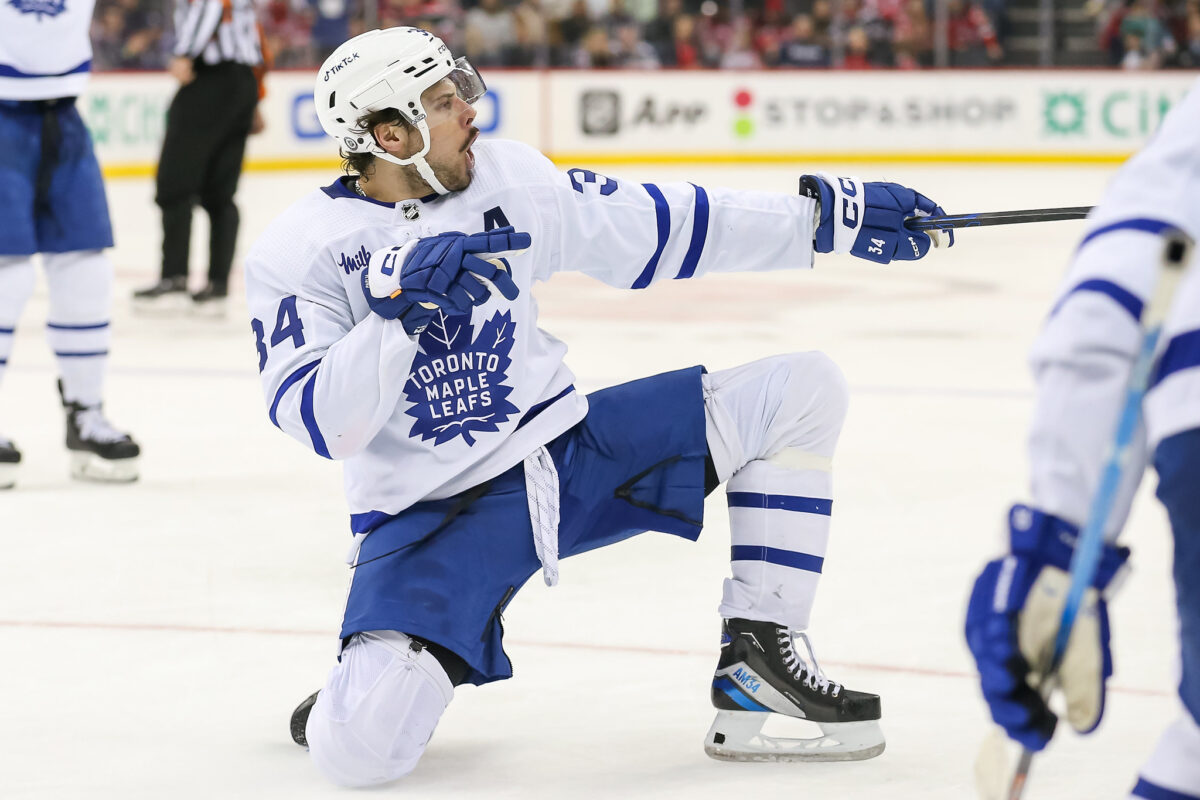
That being said, having played hurt all of last season, Matthews still scored 40 goals and 85 points in 74 games and added 11 points in 11 postseason games. If that is his floor, the Pens would still have one of the ten best players in the world for many years.
Clearing Cap Space
Heading over once again to CapFriendly (who should be sponsoring this article from all the play they get), we know that Pittsburgh will have three unrestricted free agents next summer. They are:
Jake Guentzel, Left-wing
Jeff Carter, Center
Chad Ruhwedel, Right-shot Defense
In this universe, Pittsburgh did not trade for Erik Karlsson because they had the foresight to know that next summer is the time to attack, and Mikael Granlund is still on the team. With only one year left on his contract, Granlund will be much easier to trade to a tanking team with a second-round draft pick in return for a mysterious future consideration. With no trade protection, Granlund’s gone. The Penguins then have just over $22.3 million to play with, and suddenly this plan is possible.
Signing Matthews and Filling Out the Roster
Unlike most players, Mattthews chose to only sign a five-year contract coming out of his entry-level deal. Using history to inform on his management team’s potential decision-making process, Matthews could well aim for a shorter contract. A four-year deal would allow Matthews to be a UFA again at age 30, likely still in the tail end of his prime. Should he choose that, the AAV will be lower, but, in this case, lower is still a large number, as he will easily be in the $15 million plus range – even at that number he will have a litany of suitors. Should he choose the Penguins, let’s say that Matthews signs a four-year, $61.2 million deal. That’s $15.3 million per season. That leaves the team with slightly more than $7 million and four roster spots to fill.
Suffice it to say that Matthews would replace Jake Guentzel.
With AM34 in and Guentzel, Carter, and Granlund out, the remaining spots to fill include:
- Third-line left wing
- Third-line ring wing
- Fourth-line center or right wing
- Third pair left or right defenseman
- Backup goaltender
For simplicity’s sake, I’ll start with the backup goalie, who will be on the league-minimum contract and will support the very well-paid and clearly number-one goalie, Tristan Jarry.
As strong as the top end of the skating UFA market is next summer, the backup goaltending crop is every bit the opposite. It’s a long list of goalies that you can only hope have a bad season, or washed-up starters and backups trying to hang on. So, it should be no surprise that I would target a goalie who will be 39 years old next summer and 40 during the season, yet still has some magic in his glove. Yes, it’s time for Marc-André Fleury to come home.

Fleury should be the backup to rising star Filip Gustavsson in Minnesota with the Wild this season and should not have to put as much wear on the proverbial tires. This should leave enough in the tank for him to play one more year in Pittsburgh. As close as he is to retirement, a strong Penguins team could be enough for him to take one more run and leave both Pittsburgh and the NHL on his terms. If the Pens miss out on Fleury, I would recommend they find a top goalie across the pond in his late 20s, someone with potential who is willing to sign for the minimum and cross your laces that he adjusts to the small ice quickly. Otherwise, it is slim pickings.
On defense, I’d love to see 2021 first-round draft pick Owen Pickering take a couple of massive steps forward and become an everyday player. I would say the possibility of that is only 20% though, so Pittsburgh will need a stopgap.
If you’ve read my previous articles, you know my respect for Dylan DeMelo’s defensive game and ability to anchor a top pairing (to the point where I should mention him in every article, simply because). However, with an expiring salary cap hit of $3 million and his game still at its peak, I don’t see him being affordable. A $3 million-$4 million cap hit for a third-pair defenseman is the kind of luxury the team should happily give up in return for adding Matthews.
Trying to project how defensemen will age is a fool’s errand, however, we’re having fun here, so let’s try. Christopher Tanev was once considered a top-pair defenseman, anchoring D-units for both the Vancouver Canucks and Calgary Flames. Now, at the age of 33 and on the decline, the once-physical beast is a clear second-pair d-man with no offensive upside. Tanev will be coming off a $4.5 million contract signed with the Flames in the fall of 2020. With another year, a little more decline, and the opportunity to play on a legitimate Stanley Cup contender, Tanev should be affordable at around $2 million to anchor the third pairing. This would also involve trading Jan Rutta (in a package with Matt Nieto) to a team in need of experienced depth for a draft pick. Quite simply, Tanev is a huge upgrade on Rutta.
The third line has spots available on both wings. It would be amazing to sign Tom Wilson for half of his current contract ($5,166,667). There’s also no way he’s coming to Pittsburgh, and frankly, they can’t afford him at even half that contract. GMs also have to worry that someone who plays his style and has already had an ACL rebuilt falls off the Milan Lucic cliff and is suddenly a fourth line/replacement-level player at 30 or 31.
One intriguing player is the speedy former first-rounder, Kasperi Kapanen.
Everyone in Pittsburgh lights up their pitchforks…
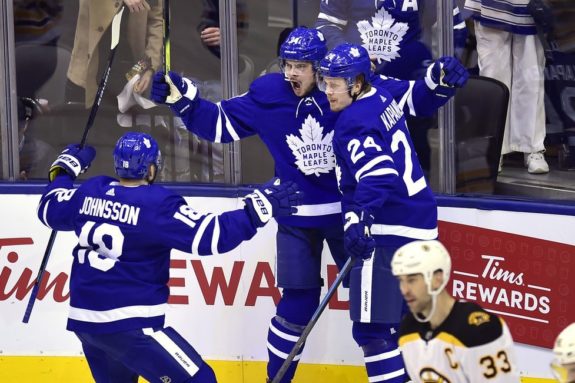
Excuse me, what I meant to say is…
(In my best David Stern voice, because he was better than Gary Bettman)
There has been a trade.
I’m sticking to the Ty Smith for Trent Frederic trade from a previous Roster Rebuild. The difference that you’ll see in Frederic’s salary post-trade vs a previous article is simply accounting for his projected production this year being that of a strong third-line player. Smith’s offense could also mean teams see him as having more upside than a middle-six player like Frederic.
That covers one wing and leaves one open on the third line. In examining affordable players who could fit on a winning team, this comes down to two key players from this past year’s Stanley Cup finals.
William Carrier vs Nick Cousins
This is an interesting situation. While not make-or-break on its own, this is the kind of signing that can either propel a team forward or bog them down. William Carrier brings a lot of physicality, whereas Nick Cousins brings the Swiss army knife nature that coaches love. While I love physical players in the bottom six, some of Carrier’s advanced numbers are trending in the wrong direction while others have clearly been inflated by his team. Be it a bad season, or someone who’s breaking down due to their style, it’s not a risk I’d take with someone like Cousins available. For me, it’s Cousins in the end. He would be insurance in case Lars Eller suddenly gets old, and he can also move into the top six when needed. Carrier is also redundant, due to the presence of both Noel Acciari and our next signing.
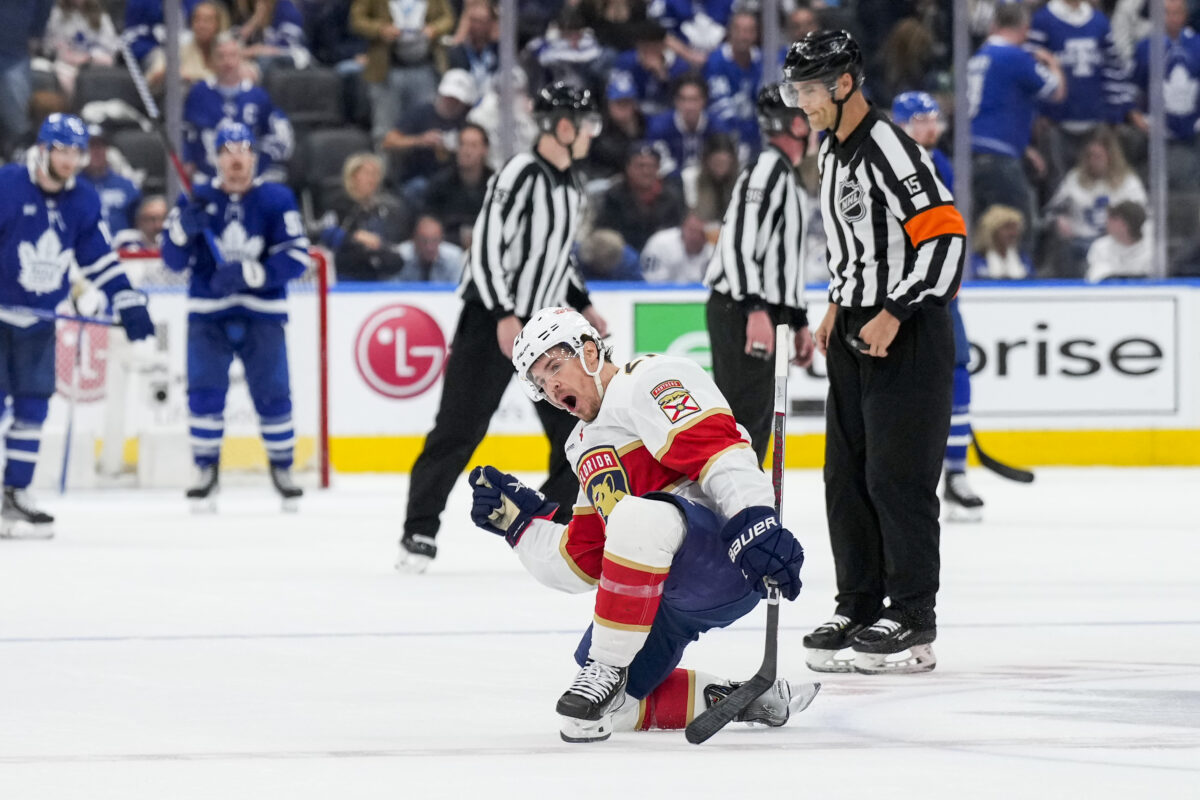
For the fourth-line opening, Sammy Blais is my target here. Blais is affordable, coming off a $1 million deal and having rebuilt his career last season after being traded from the New York Rangers back to the St. Louis Blues. As a former Stanley Cup winner, Blais brings tons of feistiness and enough scoring touch to be a positive on a winning team’s fourth line.
The Karlsson Conundrum
The buzz around Erik Karlsson coming to Pittsburgh is palpable. Everywhere you turn, someone is talking about it. Karlsson himself admitted last week that he has spoken directly to four teams, including the Pens.
Related: Pittsburgh Penguins Really Don’t Need Erik Karlsson
I’ve mentioned before that I’m not a fan of trading for Karlsson. Bringing in anyone with an $11.5 million cap hit would limit the team’s ability to bring in top young(er) players, such as the multitude who are potentially available next summer. If you had the option of trading for four years of a defenseman who is going on 34 and will be 37 at the end of the contract or signing top young players such as one of Matthews, William Nylander (coming off a 40-goal regular season and always a playoff beast), Devon Toews (perhaps the most underrated defenseman in the NHL), Elias Lindholm, Mark Scheifele (I know, but there are people who think he can still pull it together), Brandon Montour, and (if you’re not Pittsburgh) Connor Hellebuyck, which option would you choose? That is a monstrous group of bladed beasts, stars, and superstars and an easy decision for anyone looking at both the short- and long-term prosperity of your team.
The Penguins Roster
A true Stanley Cup contender has two strong forward lines, a third line that can both score and play defense, and a fourth line that can do the same with a little more grit.
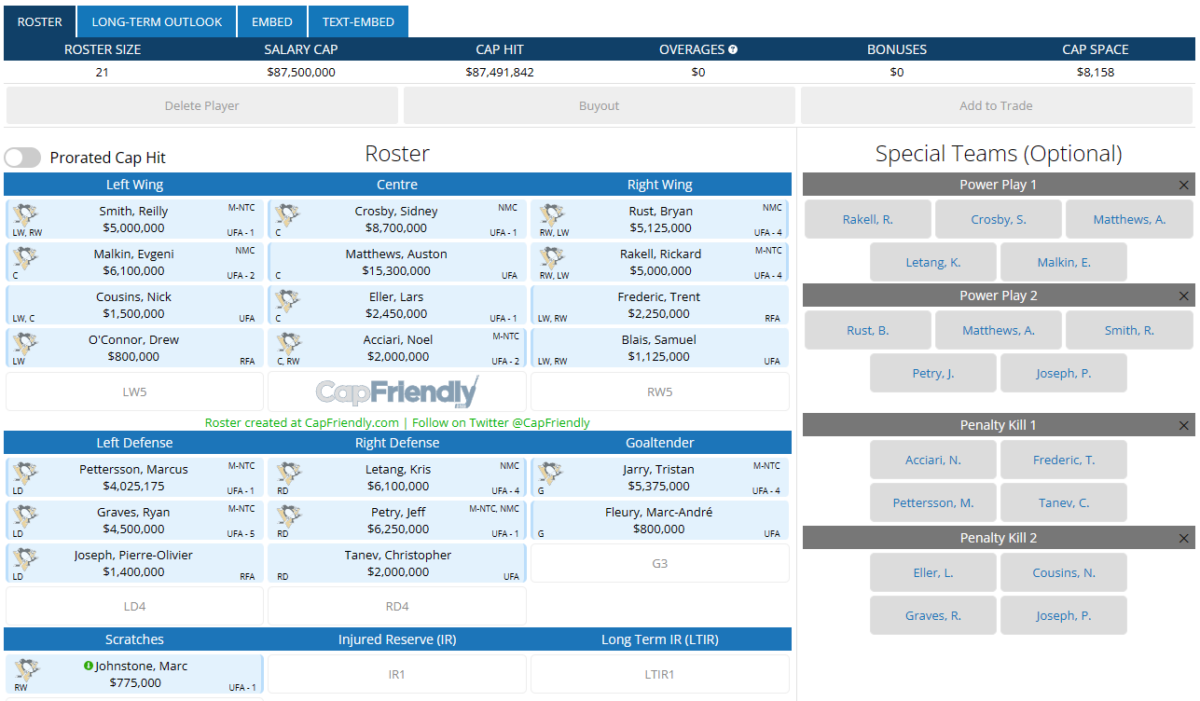
The Penguins, with the ageless Crosby and Matthews anchoring their top-two lines, would have two legitimate first lines who can play 200 feet. Malkin is now protected by moving to the wing. The third line has the guile, grit, and scoring ability that any contender is looking for. The fourth line is a buzzsaw, with both Acciari and Blais who can hit, score, play defense, and get under their opponent’s skin, along with Drew O’Connor, who is capable of that game, and – you would hope – would be energized by playing with two players of this ilk. Marc Johnstone is here as a placeholder to illustrate the 21-man roster.
If Kris Letang can continue to avoid aging and stay healthy, Pittsburgh’s defense is pretty strong. Not 2023 Vegas Golden Knights-strong, though certainly as strong as the Pens’ 2017 Stanley Cup-winning defense. Who knows, maybe Petry can be dealt at the deadline if he’s completely lost it. If so, they can bring in a top-pair defenseman with that cap space and further strengthen the group.
As it is no longer the 1980s and 90s, goalies are voodoo. That said, Jarry is very talented, and I bet he’ll be ultra-motivated behind this group.
Bottom line: If Matthews can be the best player on the ice, this version of the Penguins will bring one more Stanley Cup home to the Steel City.